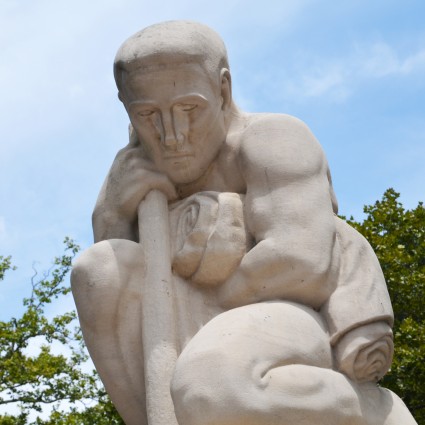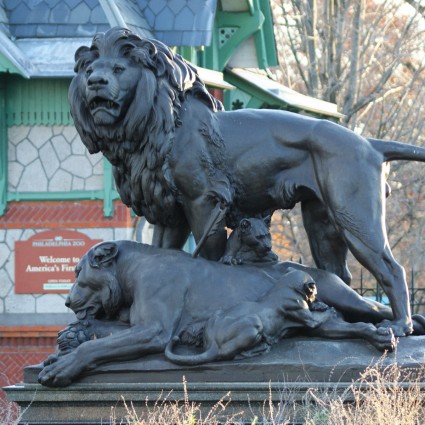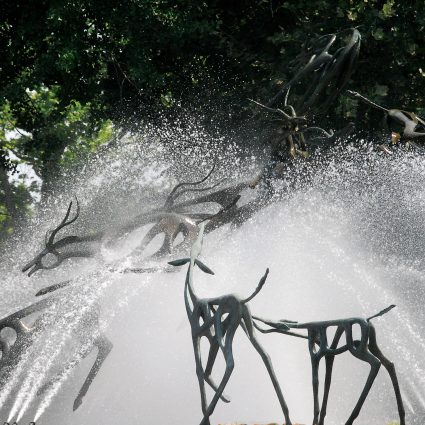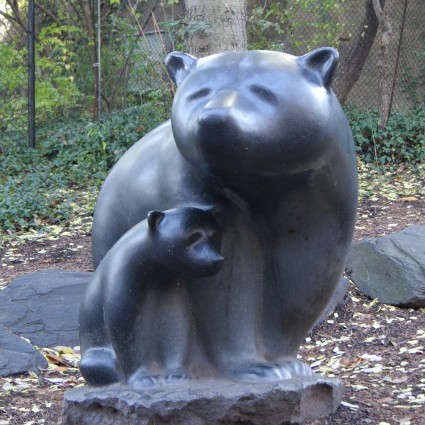At A Glance
Please note that zoo admission (fee) is required to view this sculpture
The project originated in 1959, when the Fairmount Park Art Association (now the Association for Public Art) invited a group of sculptors to submit designs for a work to be placed in the northern section of the zoo
The life-size, 37-ton monolith is considered one of the largest free-standing single-block sculptures in the U.S.
Years ago, a traveler on the train from New Haven to Washington glanced out the window as his car passed the Philadelphia Zoo. “Just look,” he exclaimed to his wife, “at that mother elephant left wandering about loose at this hour with her calf. What in the world do the zoo people mean?”
Warneke was awarded the commission on the basis of his quarter-scale plaster model, but the translation into a full-size work was a complicated process.
This story was gleefully related in a letter by sculptor Heinz Warneke, who was responsible for the apparent transgression. Warneke’s Cow Elephant and Calf, a life-size, 37-ton monolith of Norwegian granite, stands near the zoo’s main entrance. It is considered one of the largest free-standing single-block sculptures in the United States.
The project originated in 1959, when the Fairmount Park Art Association (now the Association for Public Art) invited a group of sculptors to submit designs for a work to be placed in the northern section of the zoo. Warneke was awarded the commission on the basis of his quarter-scale plaster model, but the translation into a full-size work was a complicated process. Although Warneke generally preferred to carve directly into stone or metal, the size of the mother elephant dictated a different approach.
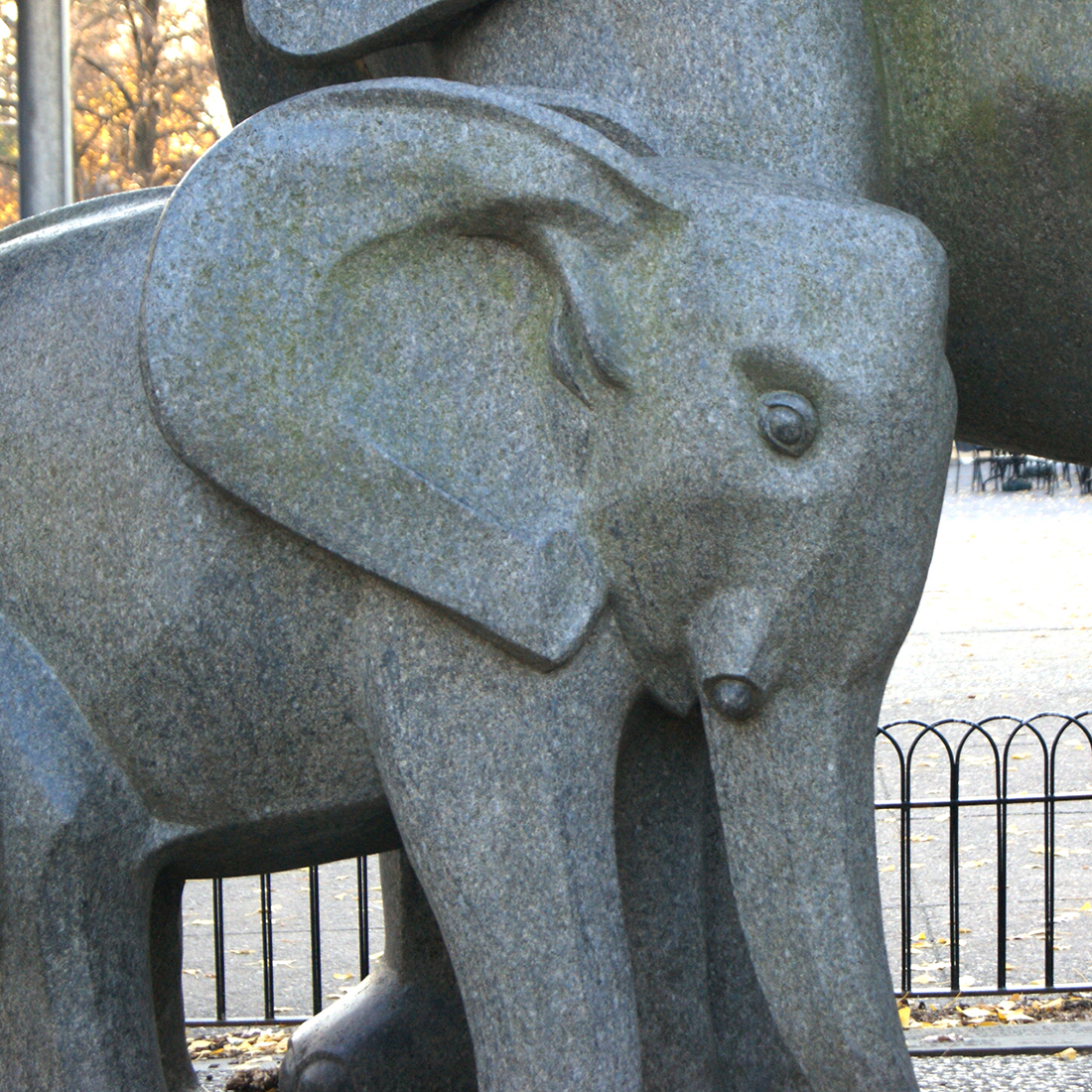
The New York studio of Rochette and Parzini enlarged the model, first in clay and then plaster. Under the supervision of a New York contractor, Rolf Fredner, the work was transported to the A/L Steinskulptur atelier in Oslo, Norway. An immense block of stone – a Bergen granite with a gray color that would simulate the hide of elephants – was quarried and rough-cut at the small Norwegian town of Larvik. The final carving was done by Oslo stonecutters guided by Warneke.
As indicated by his commission for The Immigrant in the Ellen Philips Samuel Memorial, Warneke was a widely known and highly respected artist. Born in Bremen, Germany, he emigrated to the United States in 1923 and became a U.S. citizen in the 1930. His interest in animal subjects, dating from his childhood in a German farming district, led him to create many sensitive renderings of animal forms.
In the early 1940s, he carved the sculpture for which he is best known in Pennsylvania, the Nittany Lion on the Penn State campus in State College. “My personal inclination,” he once said in explanation of his work, “is toward the quiet and simple and the direct statement.”
Adapted from Public Art in Philadelphia by Penny Balkin Bach (Temple University Press, Philadelphia, 1992).
RESOURCES
